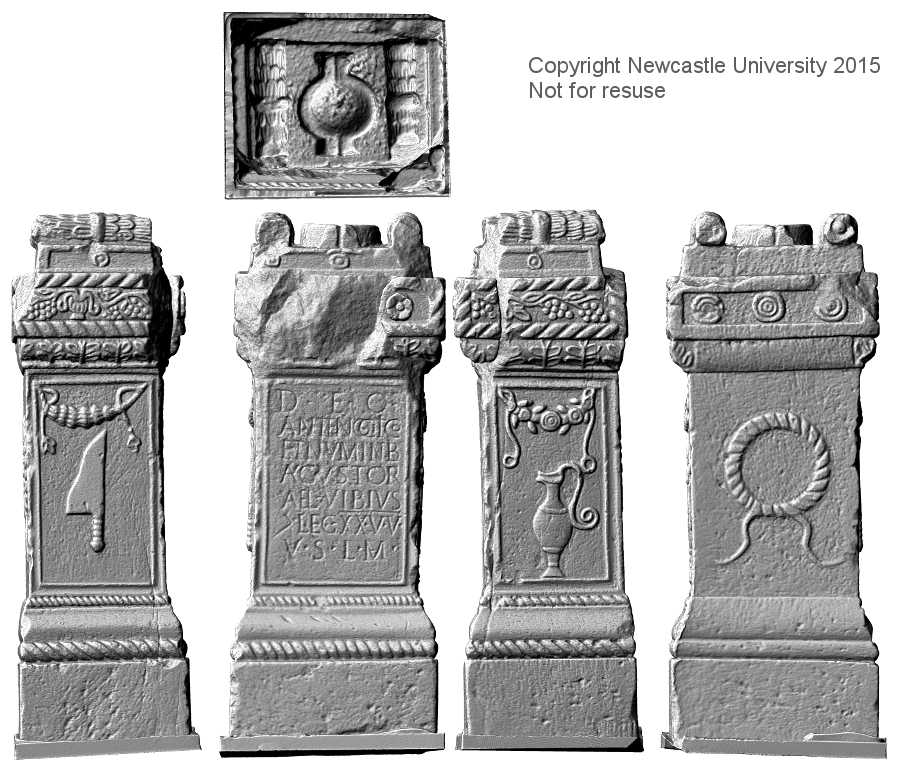Happy Terminalia!
Today’s blog on the 3D scans of Roman monuments associated with Hadrian’s Wall, products of our recent collaboration with University of Newcastle as part the NU Digital Heritage project (http://www.nu-digitalheritage.com). One of the planned uses of these digital models will be for use as a teaching resource for initiatives such as their free online Massive Online Open Course Hadrian’s Wall: Life on the Roman Frontier. Follow the links to see part one, part two and part three of our blog series.
Today’s blog is a little bit early as we wanted to put something out on Terminalia, which was celebrated by the Ancient Romans on the 23rd of February in honour of the god Terminus. Terminus was the god of boundaries and Hadrian’s Wall is certainly one of the most significant boundaries in the whole of the Roman Empire! Terminus’ statue was merely a stone or post stuck in the ground to distinguish between properties. To celebrate Terminali the two owners of adjacent properties would crown the ‘statue’ with garlands and raise an altar, on which they offered up some corn, honeycombs, and wine, and sacrificed a lamb or a sucking pig.

This week’s monument was discovered in 1887 within the ruins of a Roman temple outside the south-east angle of Condercum (Benwell Fort) the third fort along Hadrian’s Wall, three kilometres to the west of the Newcastle. Although it is dedicated to Antenociticus, a local Celtic god rather than Terminus, it is a sacrificial altar and its inscription reads ‘To the god Antenociticus and to the Deities of the Emperors Aelius Vibius, centurion of the Twentieth Legion Valeria Victrix, willingly and deservedly fulfilled his vow’. The ‘Victorious Valerian Twentieth Legion’ was probably founded shortly after 31 BC participated in the invasion of Britannia in 43 AD. It remained active in the province until at least the beginning of the 4th century.
The altar is highly decorated in the classical style, with roundels on each side of the capital and bolsters modelled to imitate bundles of incense secured by buckled straps. The style of the focus implies that it was designed with the purpose to hold offerings in mind. The moulding to the top of the altar is decorated with carvings of stylised plants, whilst the shaft itself is carved with a depiction a beribboned garland and a sacrificial knife on the left side and a similar garland with a jug on the right. A depiction of a large wreath decorates the back panel. This image is a good demonstration of how modern 3D scanning techniques can be used to produce orthographic images very similar to drawing by hand.
For more information see:
The inscription on the Roman Inscriptions of Britain website
Concordum (Benwell Fort)
By John McCarthy - Project Manager